Uncover Your Locks: The Definitive Ultimate DIY Test to Indentify Your Hair Type
Hair is an extraordinary feature of human uniqueness, like fingerprints, with each strand carrying a distinctive tale reflecting our individuality. Are you embarking on an enlightening adventure to unravel the secrets of your hair? If so, you’ve struck gold! Our guide, DIY Tests to Identify Your Hair Type, is the perfect companion for this exploration. This journey of discovery is not just about knowing your hair; it’s about embracing and celebrating its uniqueness. You’ll gain invaluable insights by delving into the fascinating world of hair types and textures.
Understanding your hair type is the first step in providing your tresses with the specific care and attention they need. With this knowledge, you’ll be empowered to nurture and style your hair to enhance its natural beauty and health. What is your hair type? This might seem simple, but the answer unlocks the secrets to optimal hair care. From straight to curly, each hair type demands a unique approach. By identifying your hair type at home, you’re taking control of your hair’s health and opening the door to customized hair care solutions.
How to determine your hair type might seem daunting, but it’s easier than you think. Embrace this opportunity to connect with your hair on a deeper level with DIY Hair Tests and give your locks the love and attention they truly deserve. Our guide doesn’t just offer tests; it’s a comprehensive guide to hair porosity and elasticity testing, ensuring that every aspect of your hair’s health is addressed. So, embark on this DIY adventure and discover the joy of truly understanding and caring for your hair.

Hair Type 101: Mastering Your Mane – Straight, Wavy, Curly, Coily
Welcome to a comprehensive guide to understanding your hair’s unique story.
Your hair, whether coily, curly, wavy, or straight, expresses your unique identity. Grasping your specific hair type transcends mere styling; it’s about nurturing and celebrating the health and diversity of your hair. There’s a rich tapestry of hair types out there, and using a hair type chart can be a valuable tool in recognizing what makes your hair unique.
The world of hair types is vast and varied. As Garnier’s curly hair specialist, Sabrina Ahmed points out, hair classifications range from straight to kinky-coily. It’s a spectrum, and it’s normal not to fit neatly into one category. This sentiment is echoed by Dr. Janiene Luke, who notes that varying textures across the scalp are typical. Whether your hair aligns with one type on a chart or is a mix of several, it’s all part of your hair’s unique charm.
Now, let’s delve deeper into the world of hair types. What’s your hair story?
The Four Fundamental Hair Types
The hair typing system, a brainchild of hairstylist Andre Walker and further detailed by Dr. Luke, categorizes hair into four main types:
- Type 1: Straight
- Type 2: Wavy
- Type 3: Curly
- Type 4: Coily
Beyond these, subcategories (A, B, and C) recognize the subtle nuances in your hair’s texture. This results in 12 distinct hair types. Our guide is here to help you navigate this diversity and embrace your hair’s unique narrative.
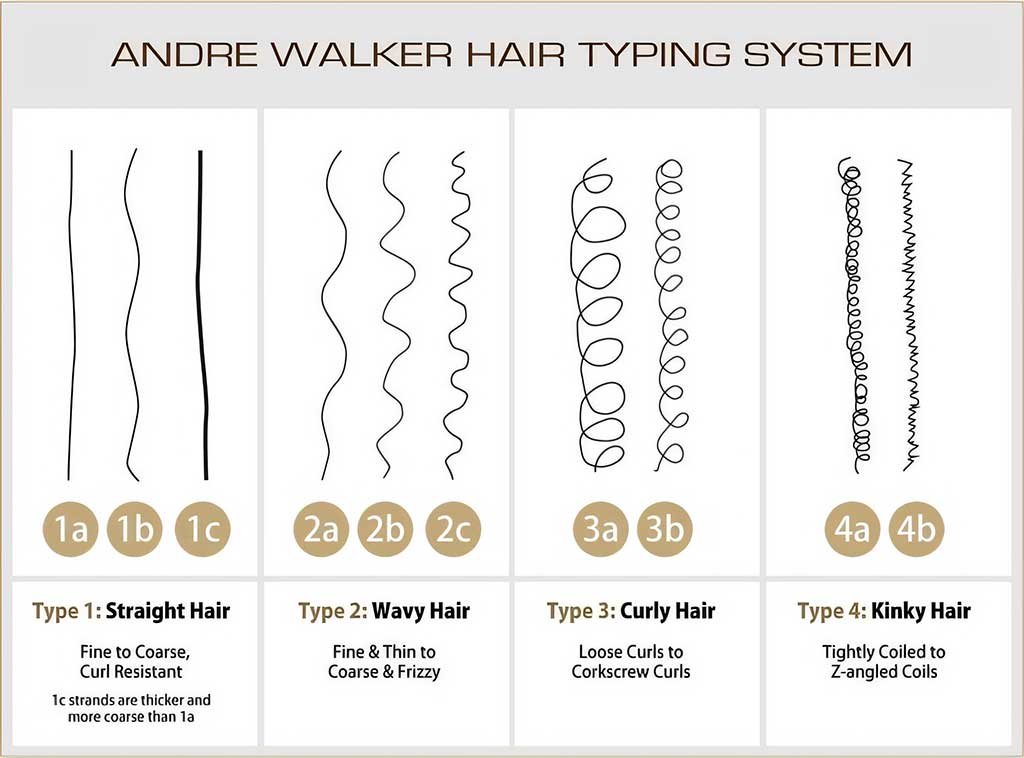
DIY Tests to Identify Your Hair Type
The Importance of Knowing Your Hair Type
Before we dive into the DIY Tests to Identify Your Hair Type, let’s grasp why knowing your hair type is crucial. Different hair types require different care routines. You can choose products and treatments that cater to your hair’s needs by identifying your hair type, ensuring optimal health and style.
Understanding your hair type isn’t just about choosing the right shampoo or conditioner; it’s about embracing a holistic approach to hair care. Whether you’re wondering, “What is my hair type,” or you’re a seasoned hair care enthusiast, knowing the specifics of your hair opens up a world of possibilities. Customized Hair Care isn’t a luxury; it’s necessary to maintain your locks’ health and vibrancy. Each characteristic is pivotal in defining the correct care routine, from the thickness of your strands to how they hold moisture.
Moreover, determining your hair type helps prevent common problems before they start. For instance, if you have fine hair, you’ll want to avoid heavy products that can weigh your hair down. On the other hand, coarser hair types might require more nourishing oils and deep conditioning treatments. This understanding is vital, especially when exploring our comprehensive sections like Common Hair Problems and Solutions and Tailored Care for Each Hair Type, where we delve deeper into care routines specific to different hair types.
Discovering What Are The Different Hair Types is not just about categorization; it’s about unlocking the best version of your hair. It’s about moving beyond generic products and embracing those that will make your hair thrive.
The Strand Thickness Test
First up is the strand thickness test. Lay a single strand of hair flat on a white surface. If it’s barely visible, you have fine hair. If it’s pretty noticeable but not thick, you have medium hair. And if it’s coarse and thick, you have thick hair. Understanding Hair Anatomy can provide more insights into why strand thickness varies.
The thickness of your hair strands is crucial in determining how you care for your hair. For instance, fine hair might require lightweight products that don’t weigh it down, while thicker hair might benefit from more affluent, hydrating products. This test is a simple yet effective way to start your DIY Hair Type Identification journey at home.
But why does strand thickness matter? It’s not just about the feel of your hair; it’s about understanding how it interacts with products and the environment. Fine hair is often more susceptible to damage from heat styling and chemical treatments, so identifying this trait can help you adopt protective practices. In contrast, thick hair might struggle to absorb moisture, leading you to explore deeper conditioning treatments. For more detailed insights, our section on Understanding Hair Anatomy provides information on how different hair structures affect overall hair health.
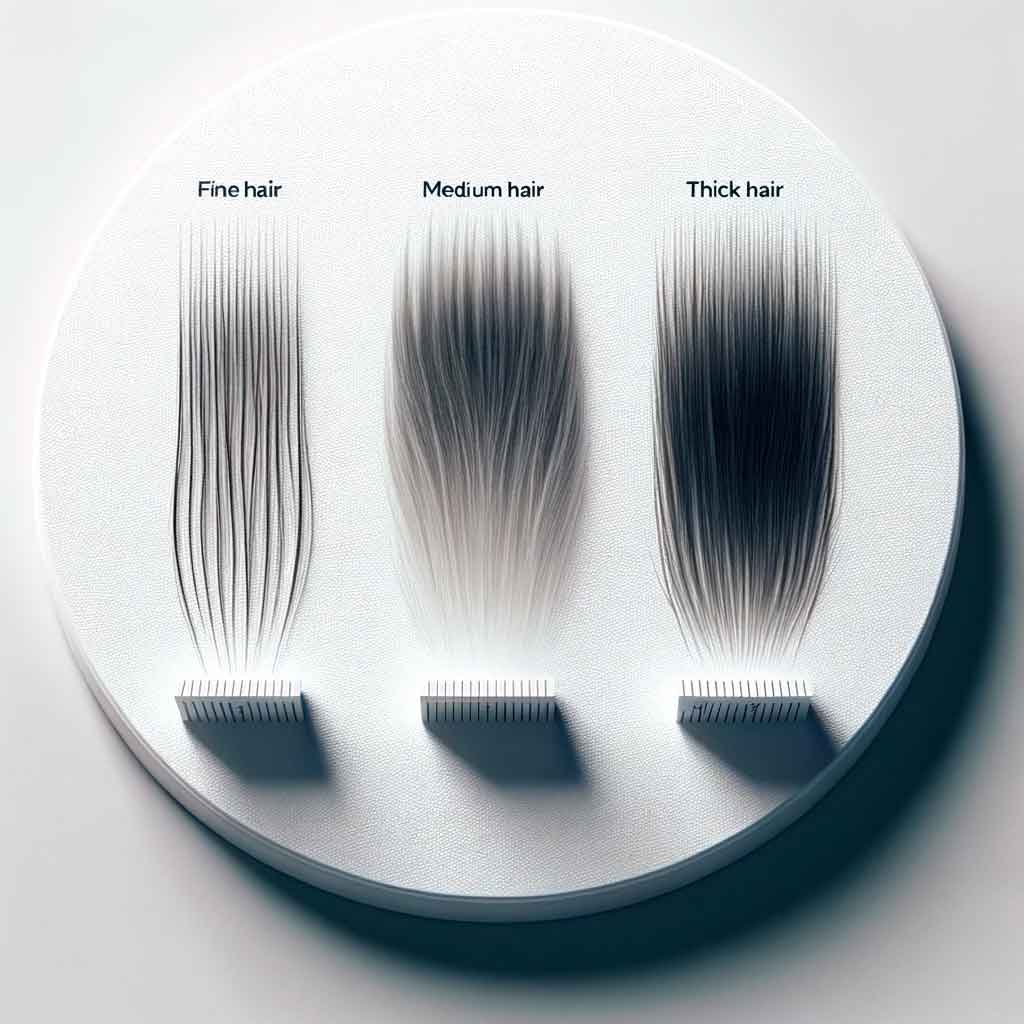
Remember, the key to customized hair care is knowing what products to use and understanding why certain products work better for your hair type. Whether you’re exploring Natural Hair Masks and Their Benefits or the latest in Styling Products, Gels, Mousses, and Sprays, knowing your strand thickness will guide you toward making the best choices for your unique hair.
The Sink or Float Porosity Test
This test helps determine your hair’s porosity – its ability to absorb and retain moisture. Please take a few strands of clean hair and drop them into a bowl of water. If they float, you have low porosity. If they sink slowly, you have medium porosity. And if they sink immediately, you have high porosity. Managing your hair’s porosity is vital to maintaining health, so don’t miss out on our section on Managing Hair Porosity.
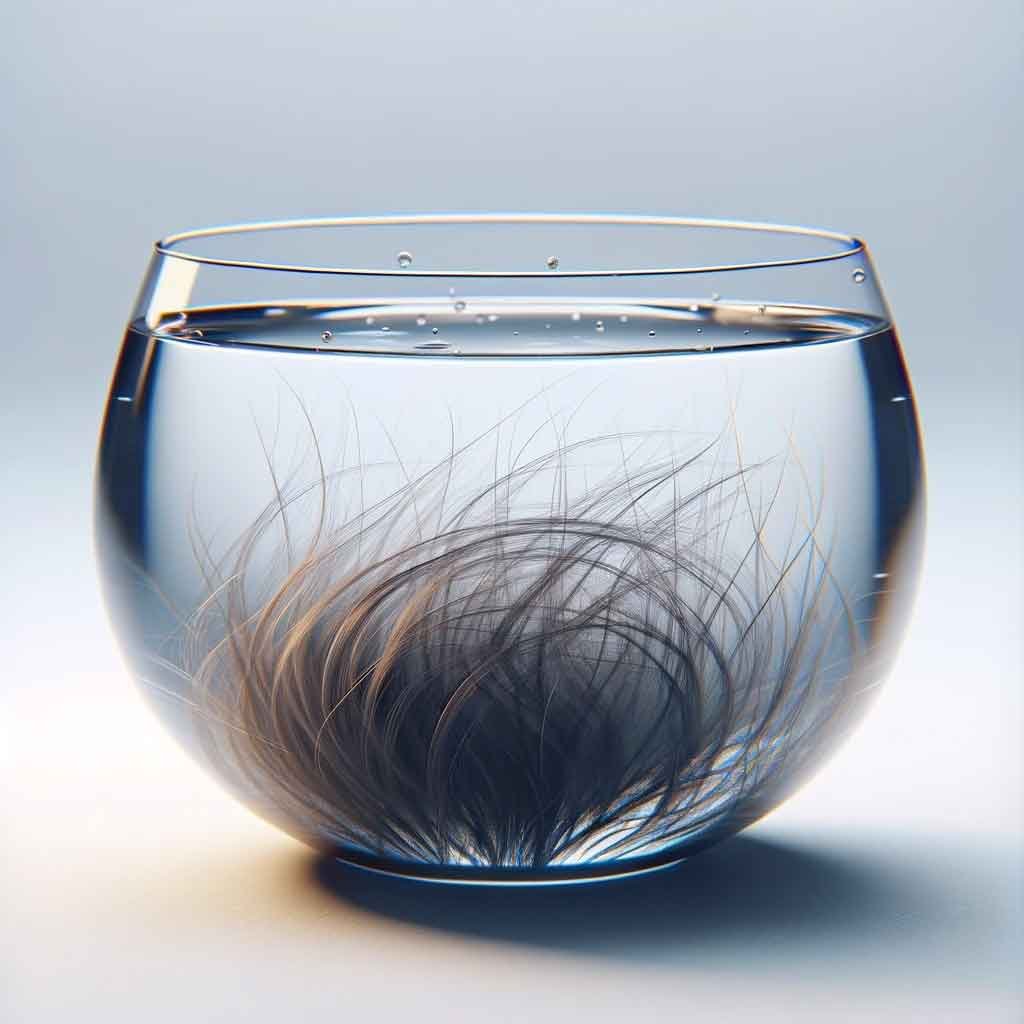
Porosity is a critical factor in how to determine your hair type and its needs. Low-porosity hair resists moisture absorption and often needs lighter, more hydrating products that don’t build up on the hair’s surface. In contrast, high-porosity hair absorbs moisture quickly but loses it just as fast, necessitating heavier, more emollient products to lock in moisture. Understanding this aspect of your hair’s nature is essential for selecting the right products and treatments, such as those detailed in our sections like Hair Oils: Benefits and Application.
Conducting the DIY Hair Tests for home porosity is simple and immensely enlightening. It empowers you with the knowledge to tailor your hair care regimen, especially when considering the diverse range of products available. For instance, those with medium porosity hair have a relatively balanced moisture retention capacity but might still benefit from periodic deep conditioning treatments to maintain optimal health.
By understanding your hair’s porosity, you’re taking a significant step toward embracing customized hair care. This knowledge is invaluable when browsing our comprehensive guides, including the Guide to Hair Porosity and Elasticity Testing, helping you make informed decisions about your hair care products and routines. Remember, the proper knowledge leads to the best care for your unique hair type.
The Curl Pattern Test
To identify your curl pattern, wash your hair and let it air dry without applying any products. Could you observe the natural pattern of your hair? You have straight hair if it dries straight without a bend or curl. If it has a slight curve or “S” shape, it’s wavy. If it forms loops and curls, you have curly hair. And if it has tight curls or spirals, you have coily hair. Refer to Identifying Your Hair Type for a deeper dive into each curl type.
Discovering your curl pattern is not just about categorizing your hair; it’s a journey toward understanding and embracing its natural texture. This test is a cornerstone of DIY Hair Type Identification, allowing you to align your hair care regimen with your hair’s inherent qualities. For example, wavy hair might require different styling techniques and products than coily hair, which often needs more hydration and careful detangling.
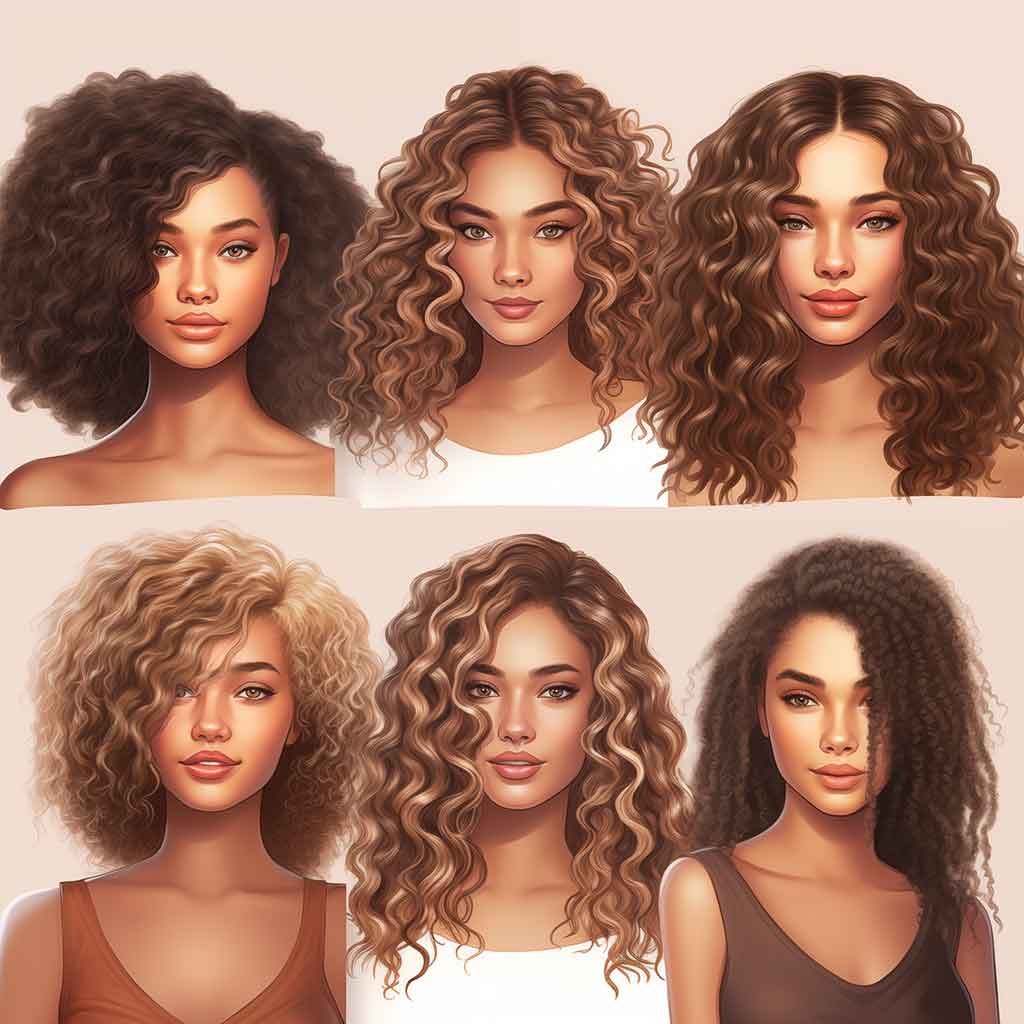
Moreover, recognizing your curl pattern aids in selecting styling and care practices that enhance rather than fight your natural hair. Whether exploring Basic Hair Styling Techniques or seeking advice on Choosing the Right Hair Tools, understanding your curl type can transform your approach to hair care, leading to healthier, more vibrant hair.
The Stretch Test for Elasticity
Gently stretch a strand of hair while it’s wet. You have high elasticity if it returns to its original length without breaking. If it breaks or doesn’t stretch much, you have low elasticity. Elasticity indicates the strength and health of your hair. For more on this, explore Tailored Care for Each Hair Type.
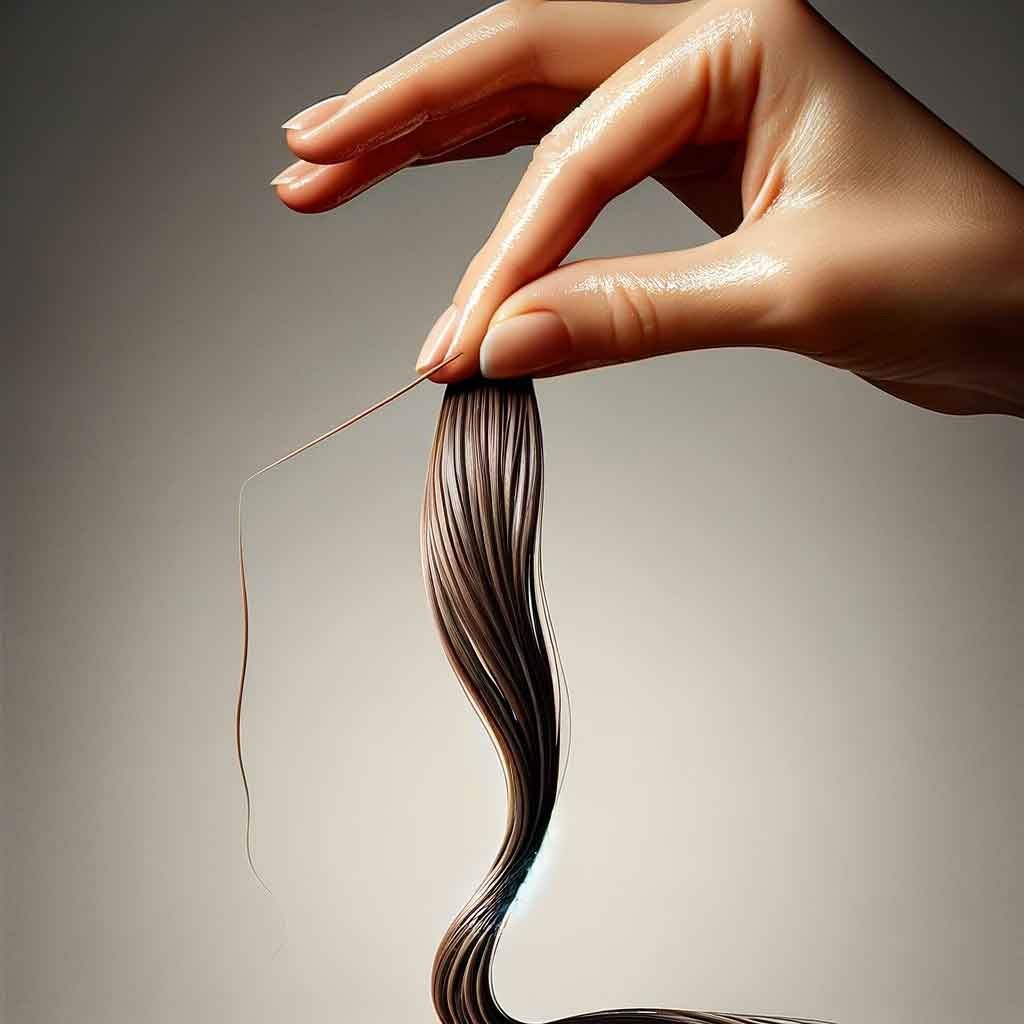
The elasticity test is a crucial component of DIY Hair Tests, as it helps you understand the resilience and flexibility of your hair. Elasticity affects how your hair responds to styling and environmental factors. High elasticity signifies healthy, well-moisturized hair that can withstand styling without damage. In contrast, low elasticity often indicates a need for more intensive care and perhaps a focus on strengthening treatments.
Incorporating elasticity testing into your routine is a proactive step in Determining Natural Hair Texture and Health. This knowledge guides you in choosing the right products and styling techniques, particularly if you explore options like heat styling or chemical treatments. For instance, hair with low elasticity might benefit from heat-protectant products or less frequent use of heat tools, as detailed in our section Protecting Hair from Heat Damage.
The Shedding Test
Finally, the shedding test. After brushing, please look over the strands on your brush. If you see a bulb at the end of the hair, it’s normal shedding. If not, it could indicate breakage. This test is crucial for understanding your hair’s overall health.
Shedding is a natural part of the hair growth cycle, but excessive shedding or breakage can indicate underlying issues. This DIY Hair Test is a simple yet effective way to monitor the health of your hair. Understanding what normal shedding looks like for your hair type is essential in Hair Type Identification and can guide you in seeking the right treatments if you notice changes.
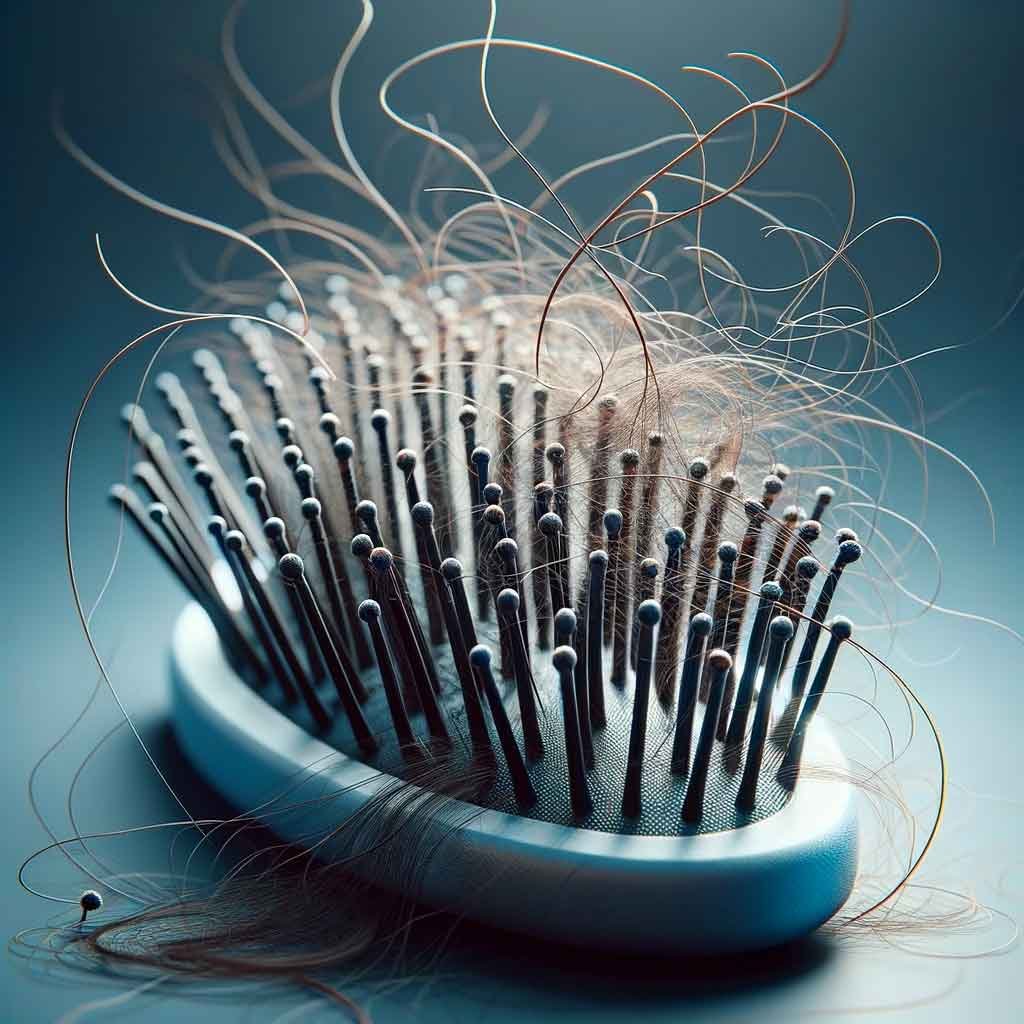
For example, if you’re experiencing more breakage than usual, this might be a sign to explore our section on Common Hair Problems and Solutions. Perhaps your hair requires more nourishing treatments or a gentler approach to styling. Similarly, if you’re interested in preventing hair loss, our segment on Addressing Hair Loss and Thinning offers valuable insights and strategies.
Wrapping It Up
Understanding your hair type is more than a cosmetic endeavour; it’s a path to deeper self-knowledge and self-care. By embracing this journey, you empower yourself to make informed decisions about the products and treatments that will bring out the best in your hair. This knowledge is invaluable for exploring the different hair types or looking for customized hair care strategies.
Remember, every hair journey is unique. Embrace yours with knowledge and confidence! As you continue to learn and adapt your hair care routine, you’ll find that taking care of your hair becomes a rewarding and enjoyable part of your daily life. Keep exploring, experimenting, and enjoying every step of your hair care journey.
Concluding your hair care journey by recognizing the uniqueness of your hair type is essential for effective, personalized care. According to Wolfram (2003), all hair, regardless of ethnic origin, exhibits common characteristics in morphology, chemical makeup, and molecular structure, underlining the importance of a personalized approach in hair care. Additionally, Wade et al. (2013) highlight the nanostructural and molecular differences among various ethnic hair types, which are crucial for choosing suitable treatments and products. Furthermore, Bolduc and Shapiro (2001) emphasize that hair is a distinct feature that plays a significant role in self-perception, and understanding how cosmetic treatments affect hair can help make informed care decisions.
Therefore, understand and embrace the unique characteristics of your hair. This empowers you to select products and treatments that enhance your hair’s best features, whether exploring Different Hair Types or seeking Customized Hair Care strategies. Every hair journey is unique; embrace it with knowledge and confidence, and caring for your hair becomes a rewarding and enjoyable part of your daily life. Continue exploring, experimenting, and enjoying each step of your hair care journey.”
References:
